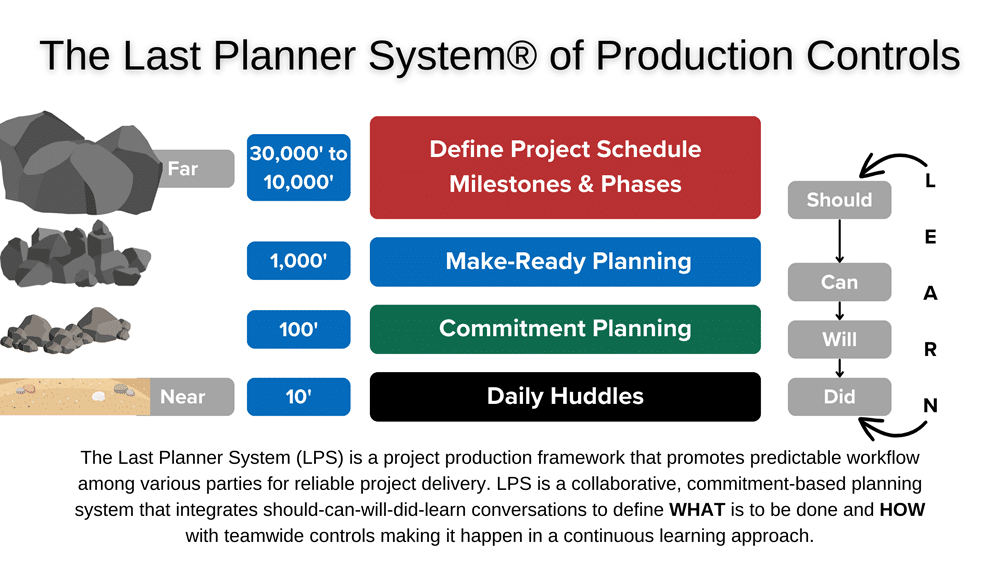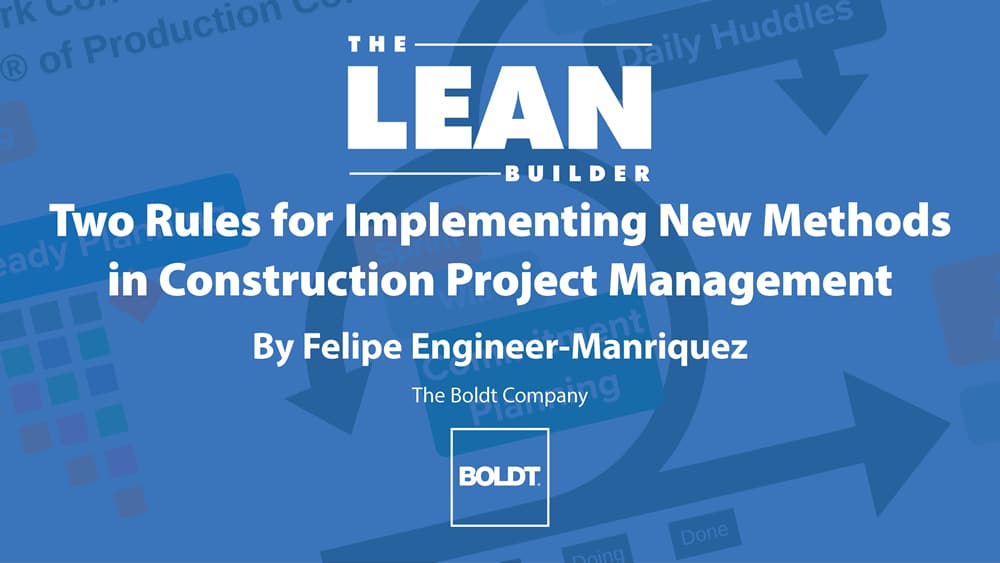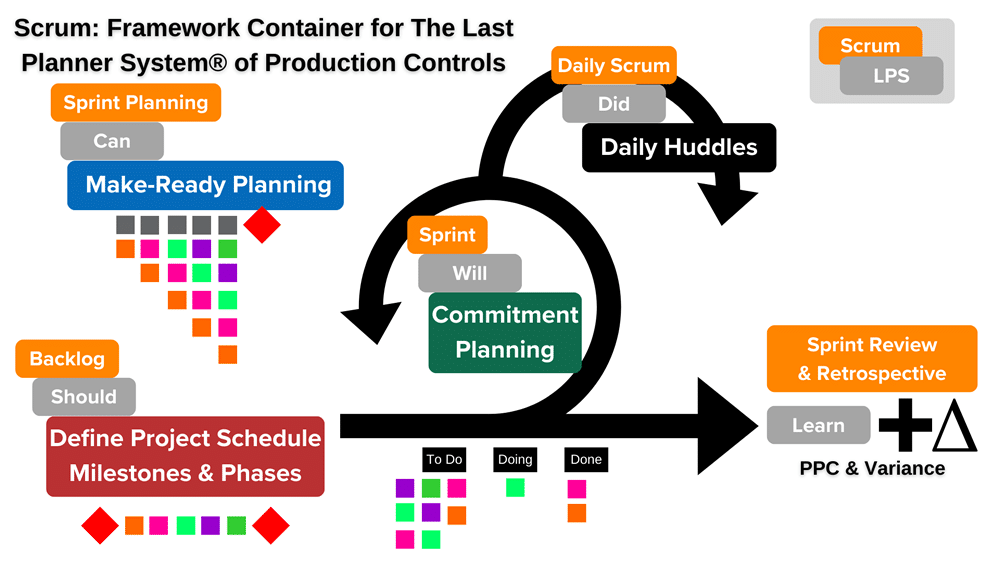In this blog, Lean influencer & Changemaker, Felipe Engineer-Manriquez delves into construction project management & 2 rules for implementing new methods.
🚀 #Changemakers
Many of us get inspired by what members of our greater #changemakers community are at work with daily.
Changemakers | noun
Individuals or groups who actively seek to make positive changes in their industry, community, or combination of how they live. These are the innovative thinkers and doers who aren’t afraid to challenge the status quo and introduce new ideas or approaches. In the context of the construction industry, #changemakers could be those embracing Lean Construction, Scrum methodologies, or groundbreaking AI technologies to enhance efficiency, sustainability, and worker safety. They’re the trailblazers like you who lead by example, showing how embracing change can lead to remarkable improvements and progress. 🚀
I’m sharing one of the ways I use Scrum as a container for enabling change with other frameworks as complicated as the Last Planner System® of Production Controls. It has been a game-changer for me and part of the success of improving schedule milestone delivery by 25% or more – merging the Scrum framework with the Last Planner System (LPS). This innovative approach has been instrumental in project delivery, whether deploying just LPS or LPS with Takt, implementing initiatives, or managing long and short projects that can be done in a single day.
Rule 1: Get Started with Actionable Tips
To kick off your journey into Scrum and LPS in construction project management, here are three actionable tips to try today:
-
- Pilot a Scrum Approach on a Small Scale: Begin with a minor project segment, applying Scrum’s daily stand-ups and sprint planning. This eases your team into Scrum practices. There is a great blog by my buddy Keyan Zandy about what makes for great huddle meetings here: https://theleanbuilder.com/7-rules-for-a-great-daily-huddle/
- Incorporate Visual Planning Tools: Use whiteboards, windows, wall space, or plywood boards to make task and phase visualizations. This improves collaboration and transparency in applying LPS principles. In Scrum, we call these Scrum Boards or Sprint Boards. In LPS, we often call them commitment planning boards or look-ahead boards. Here’s a basic visual for LPS as an example that can be used as a visual aid when describing the planning system to people who might not be familiar with it.

- Focus on Short-term Goals: Break milestones into smaller tasks with clear deadlines. Just like milestones being like big boulders seen at 30,000 feet, the weekly tasks are like pebbles or small rocks seen at 100 feet, while daily progress is like gravel seen at 10 feet. Prioritize these in daily huddles to foster a sense of achievement. If a milestone is four weeks away in the future, what is a task you’d see this week to make about 25% progress toward that milestone? What is the next task about the same size of time and effort then do the same for weeks three and four. In this example, you are breaking up the actions into about four equally sized chunks or batches.
Rule 2: Mastering Daily Huddle Meetings
Enhance your daily huddles through three skill levels:
- Easy Level: Establish the habit of short, consistent daily meetings focusing on yesterday’s achievements, today’s goals, and immediate blockers.
- Intermediate Level: Integrate detailed discussions on project flow and milestones, introducing a “parking lot” for off-topic issues.
- Mastery Level: Align daily huddles with long-term project goals, incorporating advanced LPS and Scrum elements for optimal project flow and team synergy. Players at this level often use Scrum Boards to visually capture constraints and same day removal of them.
Bonus Case Study
I’m linking to a case study that I think you’ll like, Chaos to Calm: The Power of Scrum in Resolving Work Stoppages. It’s about how a company finished about 70% faster than initially planned.
Austin’s team faced a daunting 90-day work stoppage. By employing Scrum, they resolved the issue in just 28 days, saving 62 days and significantly reducing costs. This success story highlights Scrum’s efficiency and adaptability in project management, turning potential chaos into calm using what he learned in my free 30-minute starter course.
Final Thoughts
I’d love to hear your thoughts and experiences with Scrum or LPS in your projects. Let’s start a conversation on LinkedIn by sharing this post with your network and tagging me so I can see what insights you picked up.










